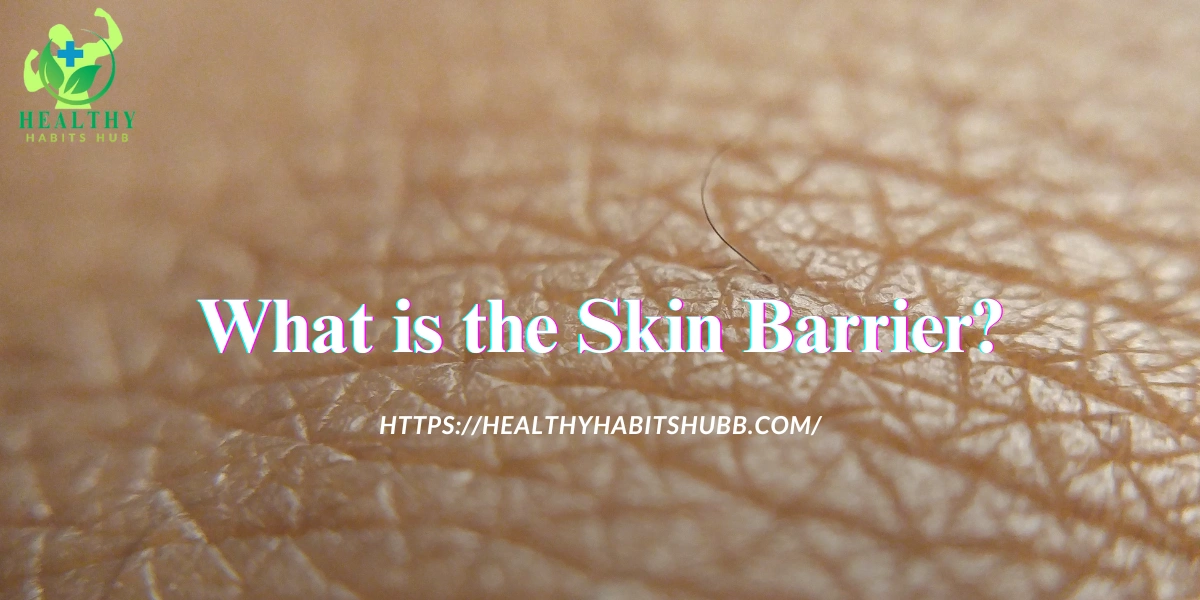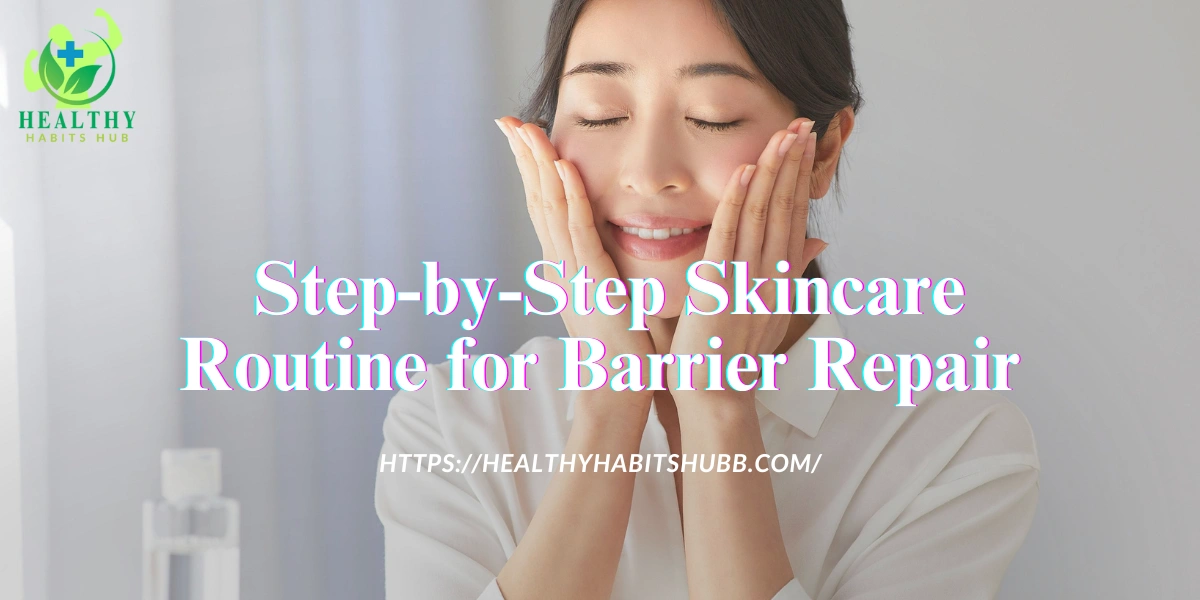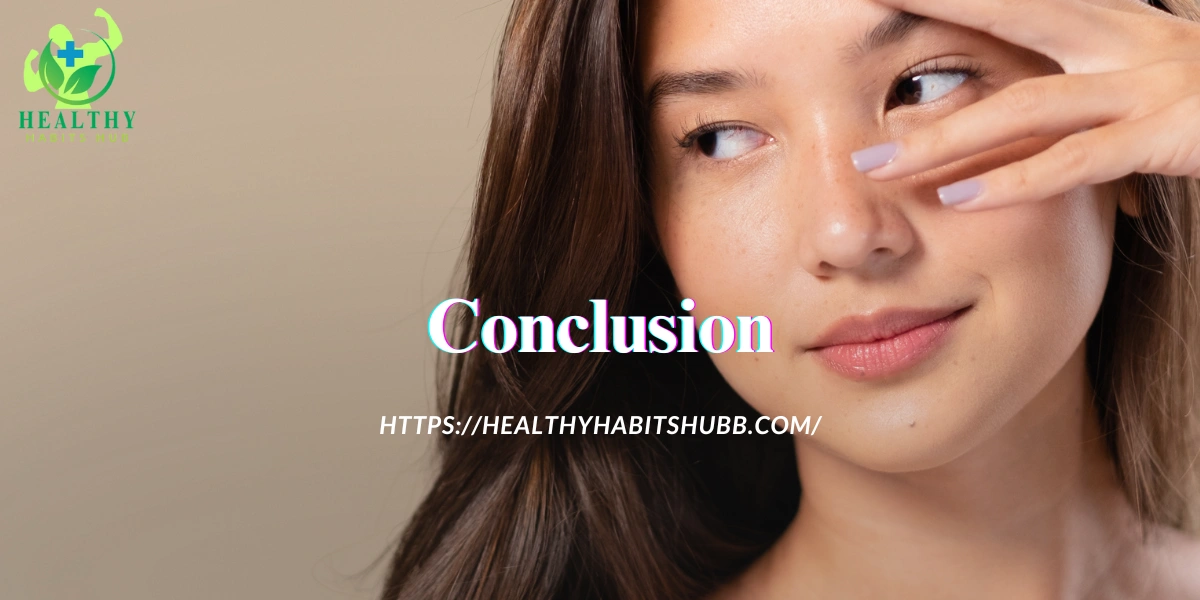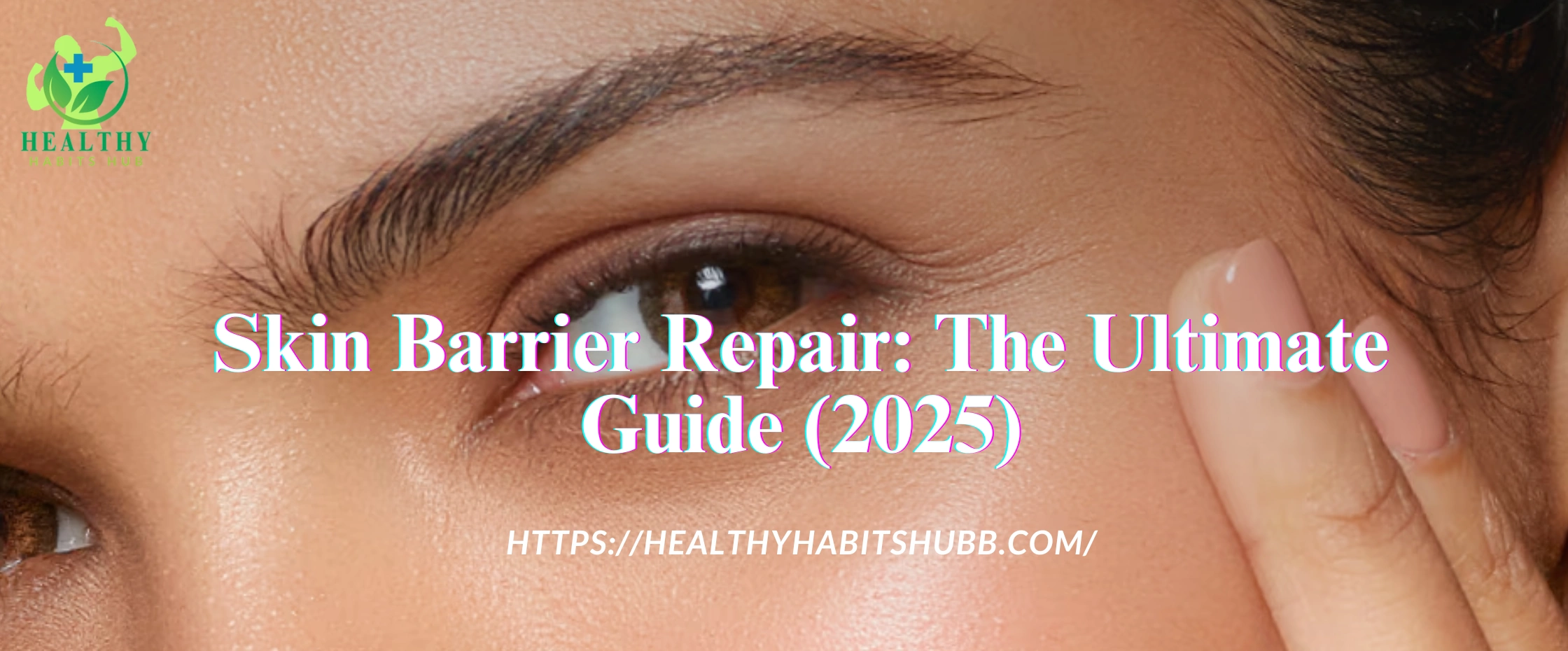Introduction:
Table of Contents
ToggleThe skin barrier is perhaps the most popular skincare topic right now, and with good reason. Not only is it the basis for healthy, radiant skin, but also the first line of defense against environmental aggressors, bacteria, and premature aging. In the past, skincare was all about exfoliation and actives such as retinoids, but the pendulum has now shifted towards balance, restoration, and strengthening of the skin barrier. This in-depth guide shall explain everything: what the skin barrier is, why it is so important, what hurts it, how to restore it, which products to use, which not to use, lifestyle influences, and the newest developments in barrier-based skincare. By the end, you’ll have a 360-degree understanding of barrier repair.
What is the Skin Barrier?

The skin barrier, also called the stratum corneum, is the outermost layer of your skin. Think of it as your body’s natural armor. It has two main jobs:
- Keep water and hydration inside the skin.
- Block harmful substances like pollution, bacteria, and UV rays from entering.
The organization of the skin barrier is frequently likened to a “brick wall”:
- Bricks: Smashed dead skin cells (corneocytes)
- Mortar: Lipids such as ceramides, cholesterol, and fatty acids that keep the cells together
Without the wall, skin would rapidly become dry, infected, and inflamed. A healthy barrier also helps preserve the skin’s natural pH (slightly acidic), and it is essential for preserving good bacteria alive and keeping bad ones away.
Why is the Skin Barrier Important?
Your skin barrier is not just something that looks nice; it’s vital to your overall well-being.
- Keeps moisture in: Stops water loss (referred to as TEWL – transepidermal water loss)
- Defense system: Keeps allergens, irritants, and germs out
- Supports healing: Assists skin to heal after wounds, acne, or irritation
- Saves from aging: Maintains skin plump, elastic, and less likely to wrinkle
- Microbiome stability: Helps balance good bacteria and supports immunity
Healthy barrier = skin that looks smooth, hydrated, and radiant. Damaged barrier = skin that is tight, dry, red, and reactive.
Reasons for Skin Barrier Damage:
It’s all too easy in today’s life to weaken your skin barrier. Some common reasons are:
- Over-exfoliation: Using potent acids (such as glycolic or salicylic acid) too frequently.
- Harsh cleansers: Sulfate-based foaming cleansers rob the skin of natural oils.
- Climate stress: Harsh winters, extreme summers, and pollution compromise the barrier.
- Overuse of actives: Using too many strong serums (retinol + acids + vitamin C) without equilibrium.
- Skin conditions: Eczema, rosacea, and psoriasis naturally compromise the barrier.
- Lifestyle: Lack of sleep, dehydration, stress, and poor diet.
- Sun exposure: UV damage degrades lipids and promotes aging.
Signs Your Skin Barrier is Damaged:
Wondering if your barrier is compromised? Look for these signs:
- Persistent dryness and flaking
- Burning or stinging sensations when applying products
- Redness and visible irritation
- Increased sensitivity to products you normally tolerate
- Breakouts and acne flare-ups
- Tight, uncomfortable skin
- Excess oil production (skin overcompensating for dryness)
If your skin suddenly feels reactive to everything, your barrier likely needs repair.
The Science of Repair – Key Ingredients:
Barrier repair is all about replenishing hydration, lipids, and calming irritation. Here are standout ingredients:
- Ceramides: The “glue” that seals cracks in the barrier.
- Cholesterol: Acts with ceramides and fatty acids to provide strength.
- Fatty acids: Critical to soft, hydrated skin.
- Hyaluronic acid: It attracts and retains water in the skin.
- Niacinamide (B3): Fades redness, stimulates ceramide production, and reinforces the barrier.
- Panthenol (B5): Moisturizes, hydrates, and accelerates healing.
- Peptides: Enhance collagen and structural repair.
- Squalane: Light oil that replicates skin’s natural sebum.
- Allantoin & Aloe: Anti-irritants that diminish redness.
Step-by-Step Skincare Routine for Barrier Repair:

Less is more when repairing the barrier. Keep it gentle and hydrating.
Morning Routine:
- Gentle cleanser (cream or oil-based, sulfate-free)
- Hydrating toner or essence with glycerin or aloe
- Peptide or niacinamide serum to soothe and repair
- Ceramide moisturizer to hydrate
- Sunscreen (broad-spectrum with SPF 30+) to protect against UV
Night Routine:
- Oil or cream cleanser to cleanse dirt/makeup in a gentle manner
- Hydrating toner/essence for balance of water
- Barrier serum with ceramides, peptides, or panthenol
- Emollient-rich moisturizer or sleeping overnight mask
Weekly Care:
- Apply a hydrating sheet mask once or twice a week.
- Exfoliate no more than once a week with a very gentle option (lactic acid or enzyme-based).
Ingredients & Practices to Avoid:
During repair mode, it’s essential to avoid irritants:
- Strong acids (high concentration AHA/BHA)
- Retinoids (pause until barrier is restored)
- Harsh scrubs or brushes
- Toners with alcohol
- Fragrance and essential oils
- Hot water and long, steamy showers
Lifestyle Habits That Support Skin Barrier Health:

Skincare alone isn’t sufficient – lifestyle contributes a great deal.
- Diet: Consume foods high in omega-3 (salmon, flaxseeds, walnuts) and antioxidants (berries, spinach).
- Hydration: Consume at least 2–3 liters of water per day.
- Sleep: Get 7–8 hours of good sleep to permit skin repair.
- Stress management: Yoga, meditation, and breathing decrease cortisol, which aggravates inflammation.
- Gentle showering: Take lukewarm showers and gentle body cleansers.
- Humidifiers: Introduce moisture in the home during dry weather.
Professional Treatments for Barrier Repair:
For extensive damage, professional treatment can accelerate recovery:
- Dermatologist advice: The key to eczema, rosacea, psoriasis.
- Barrier facials: Charge skin with ceramides, hyaluronic acid, and antioxidants.
- LED light treatments: Decreases inflammation and enhances healing.
- Moisture infusion therapies: Hydration infused deep within the skin.
Product Recommendations (2025):
A few of the best barrier-supporting products:
- Moisturizers: CeraVe Moisturizing Cream, La Roche-Posay Cicaplast Baume B5, Dr. Jart+ Ceramidin Cream
- Cleansers: Vanicream Gentle Cleanser, Cetaphil Gentle Skin Cleanser
- Serums: Paula’s Choice Niacinamide 10%, The Ordinary Buffet (peptides)
- Oils: Biossance Squalane Oil, The Ordinary B Oil
- Sunscreens: EltaMD UV Clear, La Roche-Posay Anthelios Melt-In Milk
The Future of Barrier Repair (2025 and Beyond):
The skincare market now focuses on barrier-first products. Much-awaited innovations are:
- Microbiome skincare: Nourishing beneficial bacteria to fortify the defense of the skin.
- Biotech ceramides: Ceramides that are developed in a lab and efficient in a sustainable way.
- Skinimalism: Less is more with targeted products.
- AI-personalized regimens: Customized skincare programs by apps and AI for individual requirements.
- Barrier-first sunscreens: Balancing UV protection with moisturizing and repairing actives.
Real-Life Case Studies:
- Case Study: Over-exfoliation damage – Daily use of glycolic acid by a 25-year-old resulted in redness, stinging, and breakouts. With ceramide moisturizer, niacinamide serum, and sunscreen, skin healed in 4 weeks.
- Case Study: Eczema-prone skin – A 32-year-old eczema sufferer improved significantly by not using sulfates, including a fatty acid-rich moisturizer, and a humidifier.
- Case Study: Stress-related barrier issues – A student developed dry, sensitive skin during exams. Stress management + barrier-friendly products restored balance in 6 weeks.
Expert Insights:
Dermatologists highlight the fact that “stronger isn’t always better” when it comes to skincare. Too many active products are combined by many patients, causing harm to the skin. Experts advise:
- Stay with 3–5 must-have products.
- Start with hydration and barrier repair.
- Add strong actives only once the barrier is healthy.
Frequently Asked Questions Regarding Skin Barrier Repair

Q1: How do I repair a damaged skin barrier?
Repairing a damaged skin barrier is all about resetting, soothing, and rebuilding your skin’s natural defense system. Here’s a clear breakdown:
Simplify Your Routine
When your barrier is weak, too many steps or harsh products will only make things worse. Stick to a gentle, minimalist routine:
- Cleanser
- Hydrator/serum
- Moisturizer
- Sunscreen (daytime)
Use a Gentle Cleanser:
- Avoid foaming, sulfate-based cleansers.
- Choose cream, gel-cream, or oil-based cleansers that clean without stripping natural oils.
- Example: Vanicream Gentle Cleanser, Cetaphil Gentle Cleanser.
Replenish Lipids & Hydration:
The skin barrier needs a mix of water and oils to function. Look for products with:
- Ceramides, cholesterol, fatty acids (rebuild the “mortar”)
- Hyaluronic acid & glycerin (restore hydration)
- Squalane & panthenol (soothe and protect)
Moisturize Generously:
Choose a ceramide-rich, fragrance-free moisturizer and apply it morning and night. Don’t be afraid to reapply if your skin feels tight or dry during the day.
Always Wear Sunscreen (Daytime):
UV rays are one of the biggest enemies of the skin barrier. Use a broad-spectrum SPF 30+ daily, preferably mineral-based (zinc oxide or titanium dioxide) for sensitive skin.
Pause Harsh Actives:
Put exfoliating acids, retinoids, and alcohol-heavy toners on hold until your barrier heals. Instead, focus on calming ingredients like niacinamide, peptides, and aloe vera.
Support With Lifestyle Habits:
- Stay hydrated.
- Eat omega-3 rich foods (salmon, walnuts, flaxseed).
- Avoid long, hot showers.
- Use a humidifier in dry climates.
- Manage stress and get enough sleep (skin repairs itself overnight).
Be Patient:
Depending on the severity, skin barrier repair takes 2–8 weeks. Stick to a simple, soothing routine consistently.
Q2: Do oily skin types suffer from a damaged barrier?
Yes — oily skin types can absolutely suffer from a damaged skin barrier, even though people often assume barrier issues are only linked to dry or sensitive skin. Here’s why:
Oil ≠ Hydration:
Oily skin produces excess sebum (oil), but that doesn’t mean it has enough water content. A damaged barrier often leads to dehydration, and the skin may respond by producing more oil to compensate. This is why oily skin can feel greasy but also tight or rough at the same time.
Over-cleansing & Harsh Products:
People with oily skin often use strong cleansers, foaming washes, or high-strength exfoliants to control shine. Over time, these strip natural lipids and damage the barrier, leaving the skin irritated and unbalanced.
Signs of Barrier Damage in Oily Skin:
- Skin feels both oily and tight at once
- Increased breakouts due to inflammation
- Redness or stinging when applying products
- Flaky patches despite excess oil production
- Shiny skin that looks dull or rough in texture
Why Repairing the Barrier Helps Oily Skin:
- Balances sebum: When hydration is restored, oil production normalizes.
- Reduces acne: A healthy barrier reduces inflammation and prevents pore-clogging bacteria from thriving.
- Improves tolerance: Oily skin can better handle acne treatments (like salicylic acid or retinoids) if the barrier is strong.
- Enhances glow: Balanced hydration prevents dullness and roughness.
Q3: Do I have to eliminate all actives?
Great question! The short answer is: No, you don’t always need to eliminate all actives during skin barrier repair — but you do need to be selective and cautious. Here’s the detailed explanation:
Why Some Actives Should Be Paused
Actives like strong exfoliating acids (AHAs/BHAs), retinoids, and high-strength vitamin C can be too harsh on a weakened barrier. They increase sensitivity, dryness, and irritation, which can delay repair. If your skin is stinging, red, or peeling, these should be paused until the barrier is stable again.
Gentle Actives That Can Stay
Not all actives are harmful during repair. Some actually help the barrier:
- Niacinamide: Strengthens barrier, reduces redness, and increases ceramide production.
- Panthenol (Vitamin B5): Soothes and heals.
- Peptides: Support repair and collagen renewal.
- Hyaluronic Acid: Hydrates and supports barrier recovery.
These can usually be continued even when your barrier is weak, as long as they don’t cause stinging.
When to Reintroduce Strong Actives
Once your skin feels comfortable (no stinging, no constant redness), you can slowly bring back stronger actives:
- Start once a week with retinoids or exfoliants.
- Use a sandwich method (apply moisturizer before and after the active) to buffer irritation.
- Monitor skin reaction — if irritation returns, pause again.
Listen to Your Skin
Everyone’s tolerance is different. If your skin feels inflamed or uncomfortable, it’s safer to simplify your routine until it calms down.
Q4: Is sunscreen necessary during repair?
Yes — sunscreen is absolutely necessary during skin barrier repair. Here’s why:
UV Rays Worsen Barrier Damage
Even if your skin barrier is already compromised, UV rays can break down lipids, damage proteins, and cause oxidative stress. This further weakens the skin’s protective layer, making repair harder.
Prevents Inflammation & Redness
Damaged skin is more sensitive to the sun. Without protection, you’ll likely experience more redness, irritation, and inflammation, all of which slow healing.
Supports Healing Process
The skin barrier repairs itself more efficiently when shielded from daily UV damage. Sunscreen prevents “setbacks” in the healing cycle.
Reduces Risk of Hyperpigmentation
If your skin barrier is damaged, you may notice dark spots or post-inflammatory hyperpigmentation (PIH). UV exposure makes these spots darker and longer-lasting. Sunscreen helps prevent this.
Enhances Results of Repair Products
All the effort you put into using ceramides, niacinamide, and hydrating products will be less effective if UV rays are constantly undoing their work. Sunscreen “locks in” your progress.
Q5: Does barrier repair improve acne?
Yes — repairing the skin barrier can significantly improve acne, and here’s why:
Reduces Inflammation
When the barrier is weak, irritants and bacteria penetrate more easily, causing redness and inflammation. Inflammation plays a major role in acne, so repairing the barrier helps calm skin and reduce flare-ups.
Balances Oil Production
A damaged barrier often leads to dehydrated skin, which signals the sebaceous glands to produce more oil. Excess oil clogs pores and worsens acne. Restoring hydration through barrier repair helps regulate sebum levels.
Improves Tolerance to Acne Treatments
Many acne treatments (like benzoyl peroxide or retinoids) are drying and irritating. If your barrier is weak, these treatments may sting or worsen breakouts. A strong barrier makes skin more resilient, so you can continue acne treatments without severe irritation.
Supports Healing
The barrier plays a key role in wound healing. With a repaired barrier, post-acne marks and blemishes heal faster, and the risk of scarring decreases.
Prevents Overgrowth of Harmful Bacteria
A healthy barrier maintains a balanced skin microbiome. When disrupted, harmful bacteria (like Cutibacterium acnes) can multiply unchecked, leading to breakouts. Repairing the barrier keeps bacteria in balance, reducing acne triggers.
Conclusion:

Your skin barrier is the key to healthy, radiant skin. It shields you from outside stressors, keeps water in, and maintains your microbiome in check. With gentle washing, moisturizing products, barrier-repairing ingredients, sunscreen, and healthy lifestyle choices, you can heal and restore your skin barrier. Beauty starts with a healthy barrier. Once it’s healthy, everything else you want to do for your skin—anti-aging, acne-fighting, and more—will be much simpler.
Related Article:
https://karger.com/spp/article/36/4/174/863006/The-Skin-Barrier-and-Moisturization-Function?

